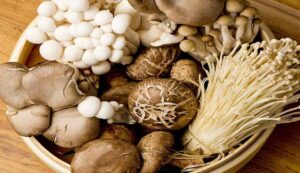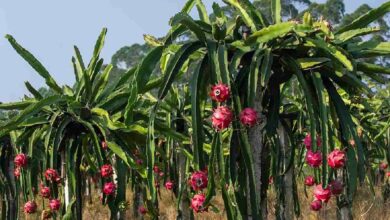Cultivate these 5 improved varieties of mushrooms, you will get excellent yield in less time
Mushroom Cultivation: Because of the sharp rise in demand for mushrooms in India, the majority of farmers have begun growing them in addition to more conventional crops. More than two thousand different types of mushrooms may be found worldwide; however, in India, particular types are the most popular. In addition to being a great source of protein, vitamins, and minerals, mushrooms are also a great way for farmers to make extra money from their output. North India’s principal edible mushroom cultivars…

1. The button mushroom
In North India, button mushrooms are the most common and widely cultivated kind. It grows well in moderate and cold climates. Protein, vitamin B2 (riboflavin), vitamin B3 (niacin), and antioxidants are all found in button mushrooms. It needs 15 to 20 degrees Celsius and 80 to 90% humidity to grow button mushrooms. In Uttarakhand, Himachal Pradesh, Punjab, Haryana, Bihar, Jammu & Kashmir, and Uttar Pradesh, it is widely grown. This kind of mushroom may be grown by farmers using compost and wheat straw.
2. The oyster mushroom
In addition to being tasty, oyster mushrooms, sometimes called Dhingri mushrooms, are very simple to produce. Fiber, protein, vitamin D, and antioxidants are all abundant in it. It needs 20 to 30 degrees Celsius and 80 to 85% humidity to grow oyster mushrooms. Paddy straw and wheat may be used to cultivate it. This kind of mushroom is widely grown in Uttar Pradesh, Bihar, Punjab, and Haryana, India.
3. The milky mushroom
The milky mushroom’s extended shelf life and white tint make it a popular choice. In warmer climates, it grows easily. This kind of mushroom is said to be an excellent source of fiber, minerals, and protein. It needs 25 to 35 degrees Celsius and 85 to 90% humidity to grow milky mushrooms. This kind thrives on paddy straw and wheat. Large-scale cultivation of this kind of mushroom is practiced in Madhya Pradesh, Bihar, Jharkhand, and Uttar Pradesh.
4. Straw Mushroom Paddy
The environment in which paddy straw mushrooms are cultivated is hot and humid. This particular kind may be prepared more quickly. It has significant amounts of protein, antioxidants, and vitamin B. High humidity (85–90%) and temperatures between 28 and 35 degrees Celsius are necessary for paddy straw mushroom production. Paddy straw is used to cultivate it. This mushroom is grown in West Bengal, Bihar, and Uttar Pradesh, India.
5. Shiitake Mushrooms
Shiitake mushrooms are mostly well-known for their therapeutic qualities and culinary applications abroad. It has high levels of antioxidants, zinc, and vitamin D. This kind of mushroom is cultivated on wooden logs at a temperature of 20 to 25 degrees Celsius and a humidity of 85 to 90%. This kind is grown in Jammu and Kashmir, Himachal Pradesh, and Uttarakhand.
The advantages of growing mushrooms
1. Financial gains
Growing mushrooms is another way for farmers to make money. With little investment, it yields more profits.
2. Health and nutrition
Mushrooms are healthy since they are rich in protein and low in fat.
3. Advantages for the environment
Growing mushrooms allows for the reuse of agricultural waste, including wood shavings and sawdust.
4. Creation of jobs
In rural places, mushroom farming generates new job prospects.
Obstacles to North Indian mushroom production
1. Insufficient technological expertise
Many farmers are unaware of the sophisticated methods used to produce mushrooms.
2. Marketing and preservation
Mushrooms deteriorate easily, which makes marketing and storage difficult.
3. Disease and pest control
Pests and fungal infections are frequent issues in the mushroom industry.
Remedies and Rewards
1. Instructional Plans
There should be more training programs on mushroom growing offered by agricultural colleges and the government.
2. Monetary Assistance
Farmers should get financial support and subsidies in order to produce mushrooms.
3. Storage Establishments
Facilities for cold storage have to be advertised. The cultivation of mushrooms in North India has revolutionized the agricultural industry. With the correct tools, assistance, and information, mushroom farming may be further developed. In addition to raising farmers’ incomes, this will have a major positive impact on nutritional security.





